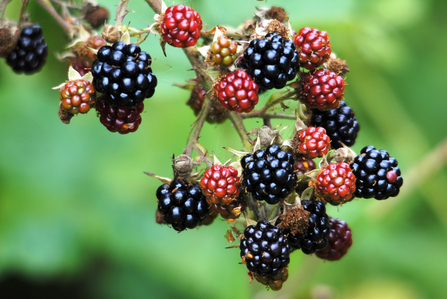
Blackberries by Amy Lewis
Protect wildlife for generations to come
Grass snake ©Jamie Hall

Blackberries by Amy Lewis
One of the most exciting sights of August is bulging dark blackberries gleaming in hedgerows waiting to be picked. In the UK there are more than 300 recognised varieties or 'microspecies' of blackberry - some of them tiny and tart, some of them succulent and sweet, but all of them providing invaluable sugary fuel for birds, mammals and insects, so if you do go picking, please leave a few for the animals!
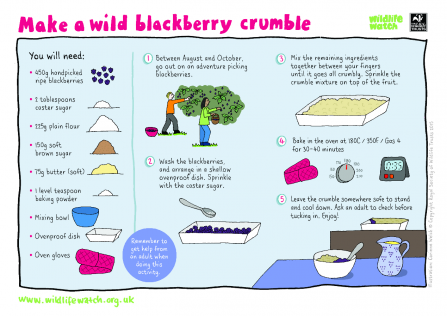
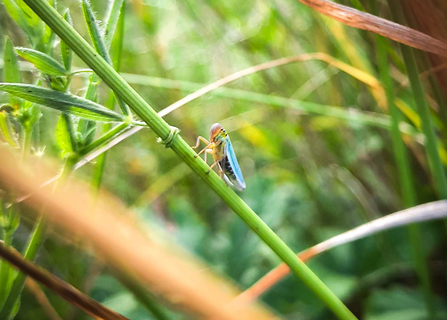
A green leafhopper (cicadella viridis) in an Oxfordshire meadow. Picture: Pete Hughes
Among the smallest animals that can be appreciated with the naked eye are leafhoppers. These tiny insects are only a few milimetres long, but come in a huge variety of colours and patterns, from striking black and yellow stripes to luminous turquoise, emerald green and stunning scarlet. Lie down in any meadow for five minutes and, once your eyes adjust, you'll start seeing these miniature gymnasts leaping and bounding all around.
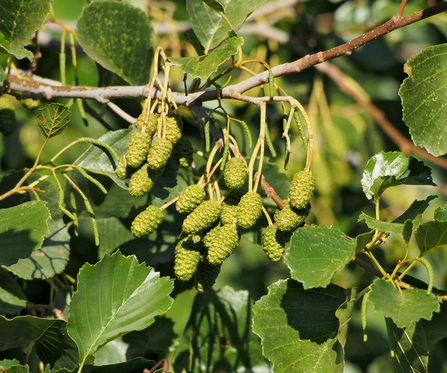
Male and female catkins on an alder tree. Picture: Luis Fernández García/ Wikimedia Commons
Alder trees are easy to recognise at this time of year as they are the only broad-leaved tree that has cones like a pine tree. Actually, these cones are the female catkins which contain the flowers. The male catkins, which are long and thin, are found on the same tree because the species is monoecious. Look for them along riverbanks where their roots provide habitats for a host of aquatic animals.
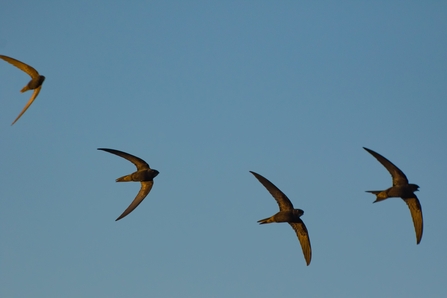
August is often known as the time of year 'when the woods go quiet', as most birds have finished their mating season and many of them have already begun to migrate south for the winter. Among the latter are swifts: having spent the past month or two screaming above our heads they are now starting their great journey back to Africa - look out for them while you can.
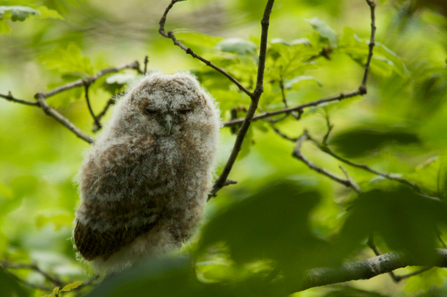
A tawny owl chick 'branching'. Picture: Tom Hibbert
One bird that very much remains in the UK is the tawny owl. Chicks are born in April and May, and just three months later the fledglings are starting to leave the nest to go and start their own families. Tawnies are strongly territorial and as summer turns to autumn they start making their famous 'twit-twoo' calls to establish their dominion.
Listen to the tawny owl call:
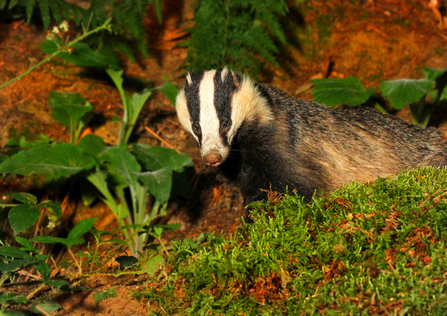
A badger emerging from its sett. Picture: Jon Hawkins/ Surrey Hills Photography
Down on the ground, look out this month for badgers busying themselves with home improvements. With this year's cubs all fully grown and finding their own food, families turn their attention to getting the sett ready for winter, and will often spend much of August excavating and then starting to gather new bedding. As they are nocturnal, if you want to see badgers your best bet is to find a well-used run (maybe identified by stiff black and white hairs), then find a comfortable spot downwind and settle in with a flask of something hot.
Vaccinating badgers (https://youtu.be/Sivoa_s4tP8)
Watch this video from Nottinghamshire Wildlife Trusts to see how badgers are vaccinated against bovine TB
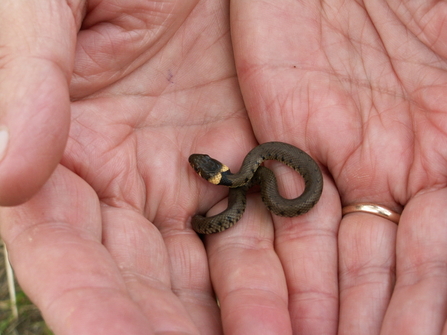
Juvenile grass snake in the hand. Picture: Margaret Holland
Grass snakes are the only egg-laying snake in the British Isles, because adders and smooth snakes incubate their eggs internally until they hatch. Female grass snakes usually lay their eggs in June or July and many of them will start to hatch in August - perfect, miniature versions of the adults. Look out for them in fields, meadows and heathlands like our Sydlings Copse reserve near Oxford and Snelsmore Common near Newbury.
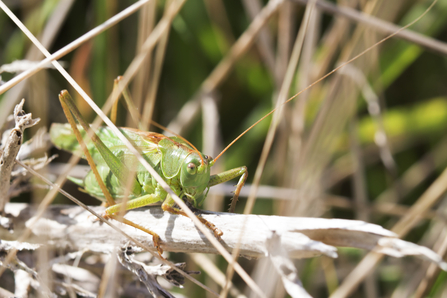
Great green bush-cricket (tettigonia viridissima). Picture: Chris Lawrence
One of the most distinctive sounds of August in a few special parts of the UK is the penetrating call of the great green bush-cricket. This vivid green singer is one of the UK's largest insects and instantly recognisable. Males sing while clinging, perfectly camouflaged, to tall plant stems, and can be surprisingly difficult to spot event when they're right in front of you! Look out for them at Yoesden Bank or our Dry Sandford Pit reserve near Abingdon.
Listen to their iconic call:
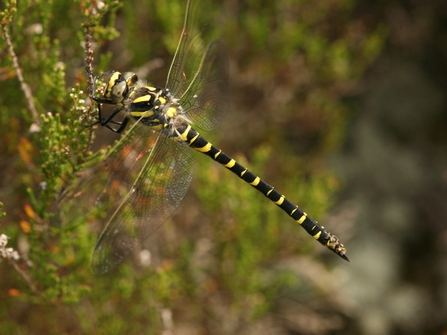
Late summer is a great time to spot lots of dragonflies and damselflies hovering around ponds, lakes and streams, but also zipping across gardens and even through urban areas as they hunt for new breeding grounds. One of the most spectacular is the golden-ringed dragonfly - the UK's longest species, and a voracious predator of smaller insects. Look out for dragonflies at reserves like Wildmoor Heath in Berkshire or College Lake near Aylesbury.
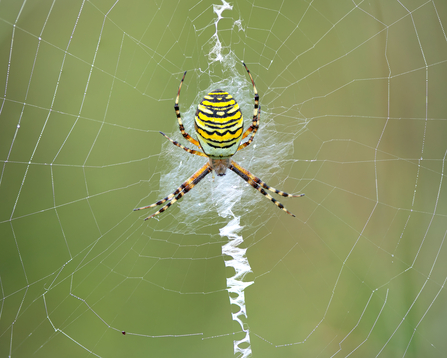
A wasp spider (Argiope bruennichi) on its web, showing the characteristic central stabilimentum structure. Picture: Jon Hawkins/ Surrey Hills Photography
One of the newest August highlights in our part of the world is the striking black-and-yellow wasp spider. This fairly large arachnid is actually a recent colonist from the continent, and was only recorded for the first time in the UK in the 1920s in Kent, but since then has steadily expanded its range. We've already seen them this year in Berkshire, Buckinghamshire and Oxfordshire - look out for them sitting on their elastic webs in long grass, and don't be alarmed - despite their waspish warning colours they don't pose any danger to humans.
Sign up below to receive the latest news from BBOWT, tips about how you can help wildlife, plus information on how you can get involved.